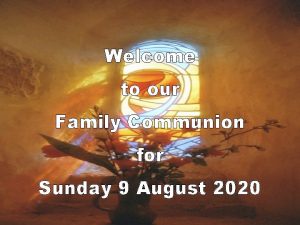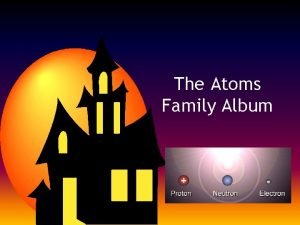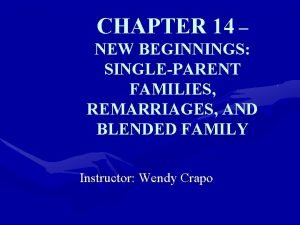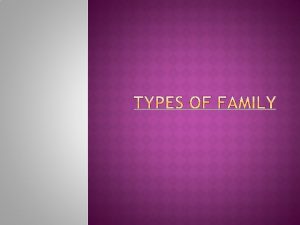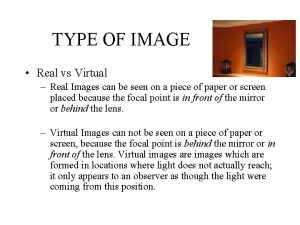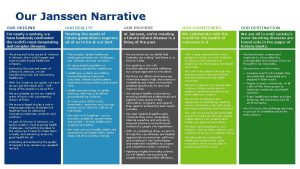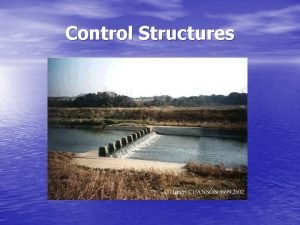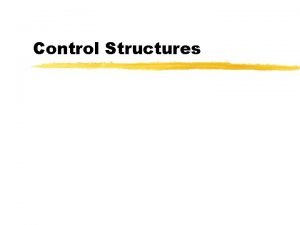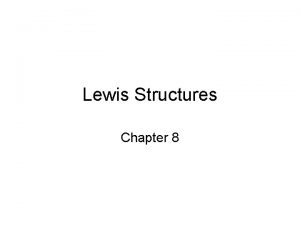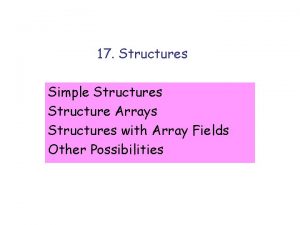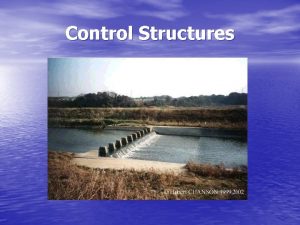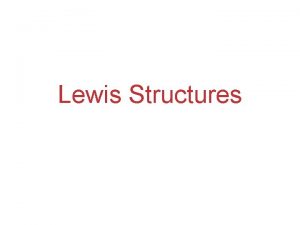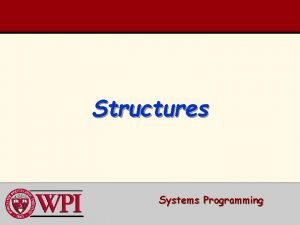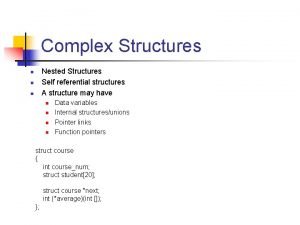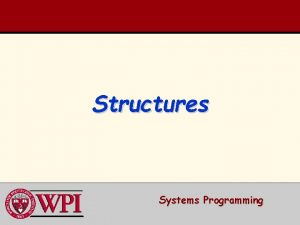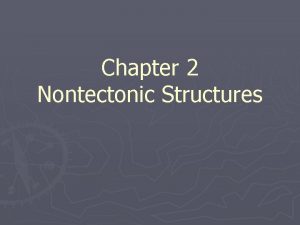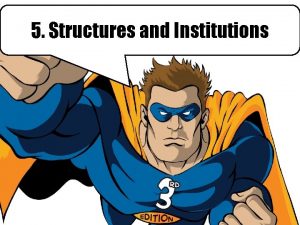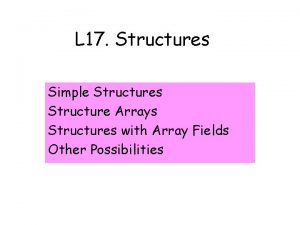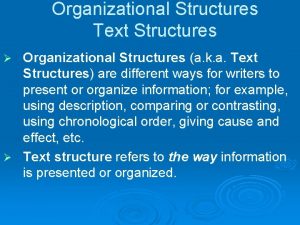Family Structures Image of a Family Our image


























- Slides: 26

Family Structures

Image of a Family § Our image of a family may come from: ►Our own family ►Television ►Movies ►Your friend’s family Most families do not show “real” life to outsiders

Family ►Consist of two or more people living in the s same household that are related by blood, marriage or adoption.

Functions of a Family ► 1. Provides for the physical needs of family members, including sharing of economic resources ► 2. Nurtures the educational needs including literacy, mental, vocational and social skills. ► 3. Meets the emotional needs of all family members, including the need to feel loved and accepted.

Single Person ► May live alone or with roommates ► Maintains bonds with family members or close friends if have no living family

Single Person ►May come and go as they please ►Time to devote to one’s career and interests

Dink Family or Couples ►Dink – Double Income, no kids ►Time to focus on just each other or their careers ►Careers of the individuals could conflict with each other

Nuclear Family ►A mother and a father and their children ►Sometimes referred to as the traditional family

Nuclear Family ► Household and child care responsibilities are shared ► Children receive the support of both parents ► Have an example of both the roles of mother and father on a daily basis

Single-Parent Family ►An adult with one or more children. This family structure is growing in the United States. ►Single-Parent families exist because of divorce, death of the spouse, or never being married.

Single-Parent Family ►Some provide all the income for the family and manage all the household responsibilities ►The adults need contact with other adults and the children need contact with individuals of the absent parent.

Extended Family ►A family where grandparents, aunts, uncles, parents and children all live together. Not as common today as in the past.

Blended Families ►A husband wife, at least one of whom has a children from a previous marriage. ►Adjustments must be made by both children and adults.

Adoptive Families ►A family in which the children are not the biological children of the couple. ►The adopted child takes on the family’s last name and has all the legal rights that a birth child has.

Legal Guardians ►A person who has the financial and legal responsibility for the care of the child. ►Parents may have died ►Parents not able to care for the child

Foster Family ► Takes care of the children on a temporary basis. ► Children may be awaiting for adoption ► Need a temporary place to stay because of family problems ► Usually licensed by the state

Stages of the Family Life Cycle

Starting as a Couple ► Time to get to know each other ► Time to learn to think and act as a team ► Must work out a relationship with extended family members and friends ► Need to discuss the following: § § Housing and Furnishings Education and Careers Money Children

Parental Stage – Expanding ► New members are added to the family ► Most of the family time is focused on the children and home life ► Children additional expenses to the budget § Child Care, Medical Care, Food & Clothing

Parental Stage – Developing ►Children enter school and have more activities that focus outside the home ►Family pace is often very busy, especially as the children move into their teen years

Parental State – Launching ► Occurs when the children start to leave home and be on their own ► For some families, older children return home before the youngest have left ► Over one half of the adults, ages 20 to 24 live with their parents

Middle Years – Empty Nest ► Family becomes a couple again ► Some parents feel lost and without purpose and others enjoy their new-found freedom ► Now have time to enjoy hobbies and special interests ► Many parents at this stage now have to care for their elderly parents

Retirement Years ► Some look forward to this stage, others do not ► Their career usually ends and many have no interests to fill in the time ► Must adjust to aging, health problems and lower income ► Some discover simple pleasures they had never thought of before

Benefits of Family Living ► 1. Satisfy physical needs – including food, clothing, shelter and medical care ► 2. Source of protection – protect you from harm or danger

Benefits of Family Living ► 3. Provide long-lasting relationships – will always have a sense of belonging ► 4. Source of love and affection – these bonds of love and affection last a lifetime

Benefits of Family Living ► 5. Provide support and encouragement – ties in families are strong, they want you to succeed. ► 6. Provide companionship – similar backgrounds and interests. Build ties that remain strong even through change
 Homologous structures examples
Homologous structures examples Thinking affects our language which then affects our
Thinking affects our language which then affects our Our census our future
Our census our future Words to christ be our light
Words to christ be our light Marcus aurelius our life is what our thoughts make it
Marcus aurelius our life is what our thoughts make it We bow our hearts
We bow our hearts Our census our future
Our census our future Our life is what our thoughts make it
Our life is what our thoughts make it Money madness poem
Money madness poem Awareness of ourselves and our environment is
Awareness of ourselves and our environment is Awareness of ourselves and our environment is:
Awareness of ourselves and our environment is: God our father christ our brother
God our father christ our brother Our future is in our hands quotes
Our future is in our hands quotes Our awareness of ourselves and our environment
Our awareness of ourselves and our environment Awareness of ourselves and our environment
Awareness of ourselves and our environment Our family members have rights and responsibilities
Our family members have rights and responsibilities Our family
Our family Patty proton
Patty proton Peter is the youngest in our family
Peter is the youngest in our family And god said let us make man
And god said let us make man Conjugal family
Conjugal family Carbon family
Carbon family Binuclear family vs blended family
Binuclear family vs blended family Cereal packet image of the family
Cereal packet image of the family Real vs virtual
Real vs virtual Real images vs virtual images
Real images vs virtual images Translate
Translate
















